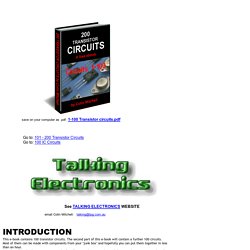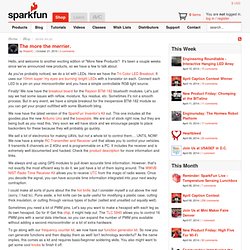

1 - 200 Transistor Circuits. This will clear-up a lot of mysteries of the solar panel.

Many solar panels produce 16v - 18v when lightly loaded, while other 12v solar panels will not charge a 12v battery. Some panels say "nominal voltage," some do not give any value other than 6v or 12v, and some specify the wrong voltage. You can't work with vague specifications. You need to know accurate details to charge a battery from a solar panel.
There are 3 things you have to know before buying a panel or connecting a panel to a battery. 1. 1. 2. You can clearly see the 11 cells of this panel and it produces 6.6v when lightly loaded. This panel claims to be 18v, but it clearly only produces 14.4v. 3. ADDING A DIODE Some solar panels will discharge the battery (a small amount) when it is not receiving sunlight and a diode can be added to prevent discharge. PREVENTING OVERCHARGING There are two ways to prevent overcharging the battery. 1. Here is the simplest and cheapest regulator to charge a 12v battery. Servo Squirter. In this video, we'll show you a simple project where we connect a hobby R/C servo to a small water pump, and control both from the USB NerdKit.

Using input from the connected computer, you can aim, and fire a stream of water. The video also introduces topics like Pulse Width Modulation (PWM), including how hobby servos share a common protocol (1.0 to 2.0ms pulses), and how to use the ATmega168 to generate these pulses. Perhaps you can add another servo, and use this to water your plants? Here are two photos of the mechanical assembly: (click to enlarge) The first part of our circuit just connects to the servo. Click below to see larger images of the schematic, etc The second part of the circuit allows the microcontroller to switch the pump motor on and off.
For VGS below about 3.0 volts, no current is allowed to flow. And now you've actually learned about all three modes of MOSFET operation: cutoff, triode, and saturation. In addition to our USB NerdKit and a wall DC adapter, you'll need:
200 Transistor Circuits. SparkFun. By RobertC. | October 21, 2010 | 3 comments Hello, and welcome to another exciting edition of "More New Products"!

It's been a couple weeks since we've announced new products, so we have a few to talk about. As you've probably noticed, we do a lot with LEDs. Here we have the Tri-Color LED Breakout. It uses our 10mm super 'my eyes are burning' bright LEDs with a transistor on each. Finally! We now have the latest version of the SparkFun Inventor's Kit out.
We sell a lot of electronics for making UAVs, but not a whole lot to control them.... We always end up using GPS modules to pull down accurate time information. Hack a Day. CircuitLab. DIY Electronics. 3D Printing and Design. Adafruit. Make: Online. DIY electro.